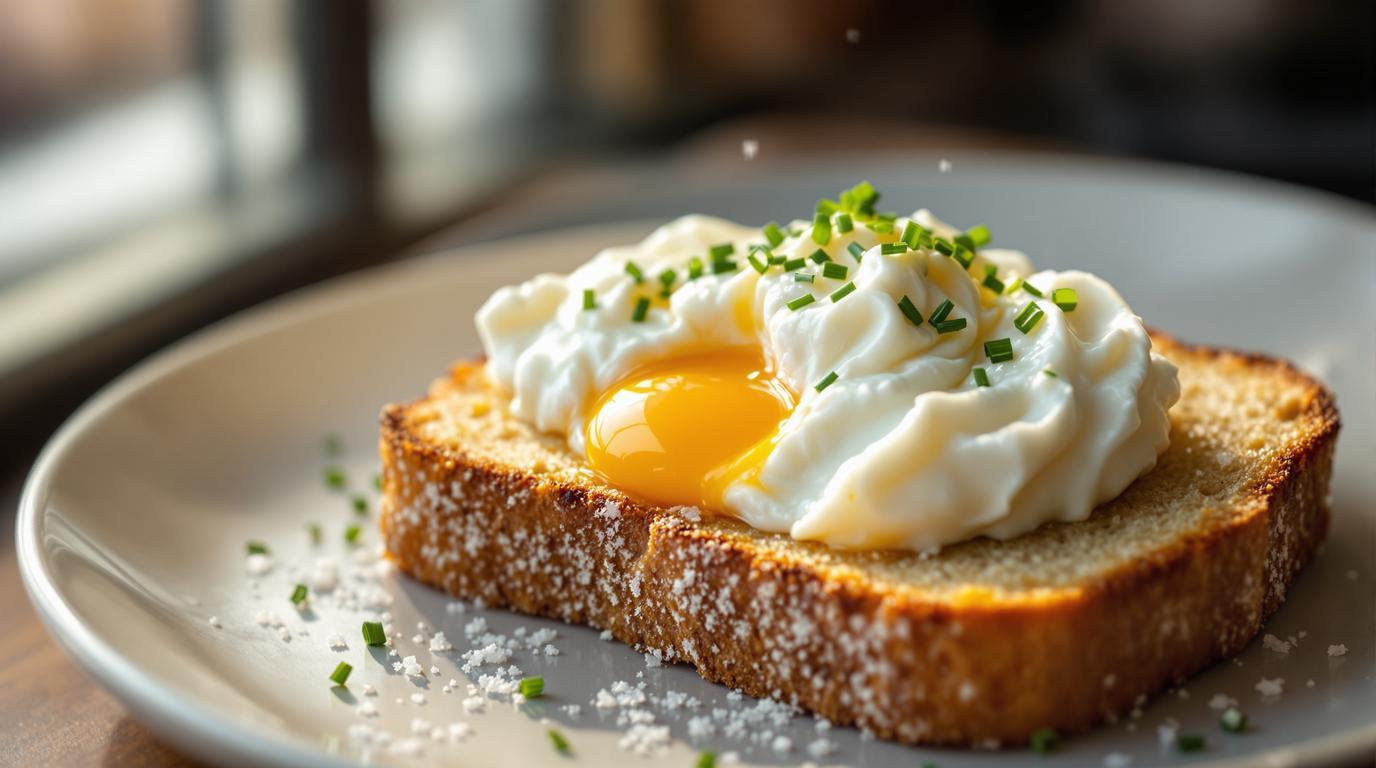There’s something magical about the simple marriage of eggs and toast that transcends ordinary breakfast fare. When I first encountered cloud eggs in a small Parisian café years ago, I was captivated by their whimsical appearance—fluffy white clouds with golden centers that seemed to float above the plate. This classic French technique transforms humble eggs into an elegant dish that’s surprisingly simple to master. Growing up, my grandmother made a version she called “sunshine nests,” serving them on thick-cut bread that soaked up the rich yolks. Today, I’m sharing my perfected recipe for Egg Nest Toast that honors tradition while adding just enough modern flair to make it irresistible.
The Story Behind Egg Nest Toast
Traditional French “nid d’oeuf” (egg nest) has graced breakfast tables for generations. While researching culinary history at the Culinary Institute, I discovered this technique dates back to early 20th-century French home cooking, where it was valued for transforming basic ingredients into something special. Unlike their elaborate puff pastry counterparts, these egg nests rely on technique rather than complex ingredients. The genius lies in separating the eggs, whipping the whites until they form cloudlike peaks, then nestling the yolk back into its transformed home.
Essential Ingredients
The beauty of this dish lies in its simplicity—you’ll need just a handful of quality ingredients:
- 4 large eggs, at room temperature (critical for proper whipping)
- ¼ cup (30g) grated Gruyère cheese (or aged cheddar)
- 2 tablespoons fresh chives, finely chopped
- ¼ teaspoon flaky sea salt
- Freshly ground black pepper to taste
- 4 slices rustic sourdough bread
- 2 tablespoons unsalted European-style butter
Chef’s Note: The temperature of your eggs matters tremendously here. Cold eggs don’t whip as effectively, so leave them out for 30 minutes before starting, or place them in a bowl of warm water for 5 minutes to take the chill off.
Step-by-Step Instructions
1. Preheat your oven to 450°F (230°C) and line a baking sheet with parchment paper.
2. Carefully separate the eggs, placing each yolk in an individual small bowl (this prevents breaking them later) and all whites in a large mixing bowl. Ensure not a drop of yolk contaminates your whites—even a speck will prevent proper whipping.
3. Using an electric mixer, beat the egg whites until stiff peaks form—about 3 minutes. You’ll know they’re ready when you can turn the bowl upside down without the whites sliding out. This is where the magic happens!
4. Gently fold in the grated cheese, chives, salt, and pepper with a rubber spatula. Use a light hand—you’re preserving those precious air bubbles that create the cloud-like texture.
5. Create four mounds of the whipped whites on your prepared baking sheet. Using the back of a spoon, make a well in the center of each mound—this is where your yolk will nest.
6. Bake the whites for exactly 3 minutes, then remove from oven. The exterior should be just beginning to set and color slightly.
7. Carefully slide a yolk into each nest and return to the oven for 3-4 minutes more. For runny yolks, aim for 3 minutes; for slightly set yolks, go for 4 minutes.
8. While the eggs finish baking, generously butter your sourdough slices and toast until golden brown.
Chef’s Secret Techniques
The difference between good and exceptional cloud eggs comes down to technique. First, never rush the whites—as with baking cookies, patience yields the best results. Second, create a deeper well than you think necessary in your whites; as they bake, they’ll puff further, potentially causing shallow yolks to slide off.
For the toast component, I brush the bread with melted butter rather than spreading it, ensuring even golden browning similar to what you’d achieve with perfectly roasted chicken skin. If sourdough isn’t available, any sturdy artisanal bread will work, though you’ll miss that delightful tangy contrast with the rich eggs.
Serving & Presentation Tips
Transfer each cloud egg to a buttered toast slice immediately after removing from the oven. The presentation should highlight the dramatic contrast between the airy white cloud and the vibrant yellow yolk—nature’s perfect color combination. I like to finish with a light sprinkle of additional chives and flaky salt.
For a complete breakfast worthy of any Parisian café, serve alongside fresh fruit or maple-glazed bacon. For a more substantial meal, consider adding roasted vegetables on the side.
When you break into your egg nest toast, the yolk should cascade down through the whites and onto the toast—creating a natural sauce that transforms each bite. This moment of cutting into the cloud and watching the sunshine spill forth is what makes this dish not just a meal, but a joyful culinary experience that connects us to generations of breakfast tables past. It reminds us that sometimes, the most memorable dishes are simply familiar ingredients transformed through careful technique and served with love.
